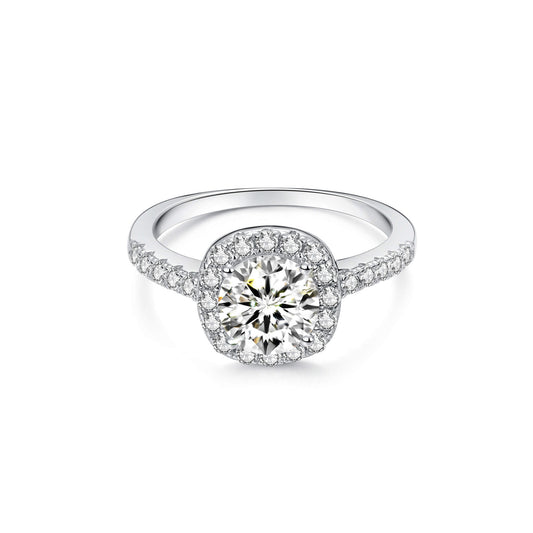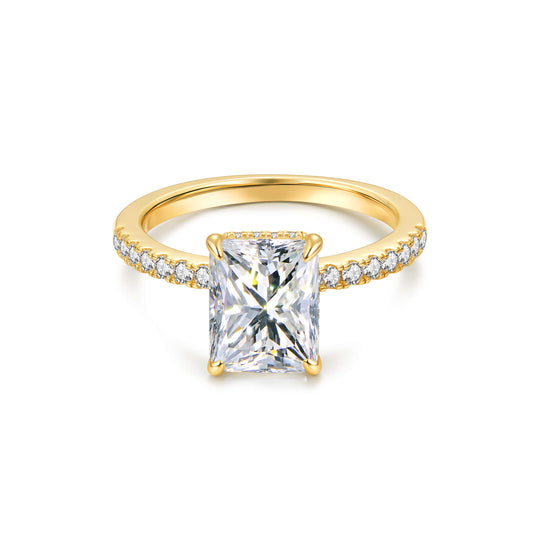What Finger Do You Wear an Engagement Ring On? Traditions & Tips
The Tradition Behind the Fourth Finger
The Origins of the “Vein of Love”

The tradition of wearing engagement rings on the fourth finger of the left hand dates back to ancient Roman times. The Romans believed in the “Vena Amoris”, or the “vein of love,” which they thought ran directly from the heart to this finger. This romantic notion made it the perfect choice for an engagement ring, symbolizing love and commitment.
Although modern anatomy has disproven the literal existence of the “vein of love,” the sentiment remains strong. The tradition of placing the engagement ring on the fourth finger has persisted, deeply embedded in Western wedding customs.
The Rise of Diamond Engagement Rings
While the Romans set the stage, diamond engagement rings didn’t become mainstream until the 20th century. Marketing campaigns, especially from De Beers, played a significant role in associating diamonds with eternal love. Their famous slogan, “A Diamond is Forever,” transformed diamonds into the ultimate symbol of commitment.
Today, diamonds remain the most popular choice, but alternative gemstones and ethical sourcing are gaining traction. Many couples now choose rings that reflect their values—whether that means opting for a lab-grown diamond, a sapphire, or a vintage heirloom piece.
Cultural Differences in Ring Placement
Wearing Engagement Rings on the Right Hand
In several cultures, the engagement ring is traditionally worn on the right hand rather than the left. Countries such as:
• Germany
• Russia
• India
• Norway
These traditions stem from cultural beliefs that associate the right hand with vows and commitments. In these societies, the choice of hand aligns with their historical and symbolic interpretations of marriage.
How Wedding Rings Impact Engagement Ring Placement
During a wedding ceremony, many brides temporarily move their engagement ring to the right hand to allow the wedding band to be placed first—closer to the heart. After the ceremony, they may move the engagement ring back to the left hand, stacking it above the wedding band.
This small yet meaningful gesture reinforces the wedding band’s significance as the primary symbol of marital unity.
Practical Tips for Wearing an Engagement Ring
Comfort & Daily Wear
While traditions play a role, comfort and practicality should also guide your decision. The fourth finger is popular because it experiences less interference in daily tasks, reducing the risk of damage.
For individuals with active lifestyles or hands-on jobs, alternative options like:
• Silicone bands for daily wear
• Wearing rings on a chain
• Opting for sturdier settings (e.g., bezel vs. prong)
These choices help preserve both comfort and the longevity of the ring.
Protecting Your Engagement Ring
Your engagement ring is not just sentimental—it’s also an investment. To keep it safe:
• Get it professionally resized for a secure fit
• Use ring guards to prevent slipping
• Insure your ring to cover theft, loss, or damage
Customizing Your Engagement Ring Set
Coordinating Your Engagement Ring & Wedding Band
When selecting an engagement ring, consider how it will pair with a wedding band. Many jewelers offer bridal sets that ensure both rings fit perfectly together.
For a personalized touch, custom-designed rings allow couples to:
• Choose complementary metals and gemstones
• Add unique engravings (e.g., initials, special dates, or meaningful phrases)
• Incorporate family heirloom elements
Engraving & Unique Gemstones
Personalization makes your ring even more special. Many couples opt for:
• Engraved messages hidden inside the band
• Birthstones or favorite gems for added significance
• Cultural or symbolic designs to reflect personal heritage
Customizing your ring turns it into a one-of-a-kind piece that tells your unique love story.
Final Thoughts
Choosing which finger to wear your engagement ring on is a mix of tradition, culture, and personal preference. Whether you follow the ancient Roman belief in the “Vena Amoris”, wear your ring on the right hand due to cultural traditions, or simply choose what feels right—the meaning behind the ring is what truly matters.
By understanding historical and cultural contexts, as well as considering practical aspects, you can make a choice that feels both personal and meaningful. Your engagement ring is more than jewelry—it’s a symbol of love and commitment that accompanies you on life’s journey.












